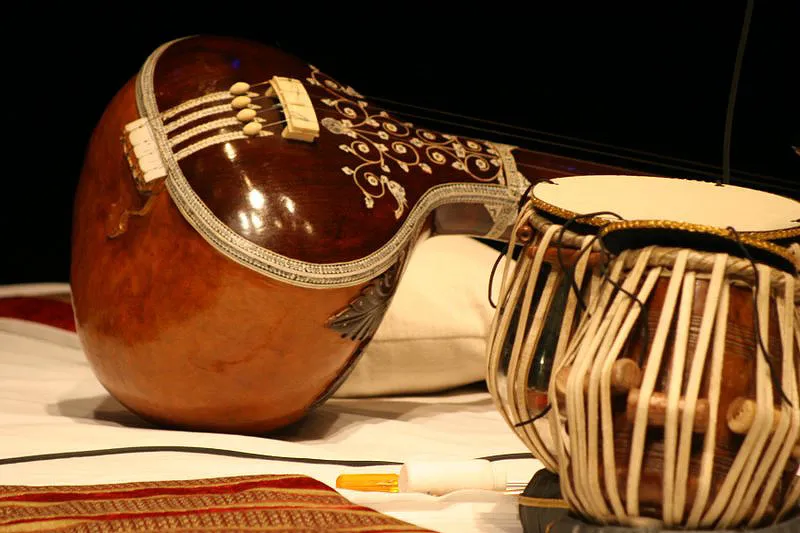1) Veena – Plucked String Instrument
Veena is a plucked string instrument which can produce music in a 3 octave range. This actually belongs to the family of chordophone instrument of India. Kapisheersh, Karkari (RV 2.43.3) and Varanya Veena also called Baan Veena have been mentioned in the Samaveda and Rigveda. . In fact, all string instruments were called veena.
The Veena was considered the most superior of all stringed instruments in the Vedas. It has been mentioned not only in the Vedas but also in the Sattaptha Brahmana and Taittiritya Samhita and is therefore also known as the divine instrument (or the instrument of the Gods). In Vedic literature different kinds of Veenas are mentioned.It dates back to around the first millennium B.C. One of early veenas used in India from early times, until the Gupta period and later (and is probably the instrument referred to as veenaa in a chapter of the Natyashastra dealing with instrumental music) was an instrument of the type of the harp and more precisely of the arched harp. It was played with the strings being kept parallel to the body of the player, with both hands plucking the strings.
Temple sculptures from the 2nd century B.C. show a type of veena being played. According to a famous music professor Sunnera Kasliwal, the musical instrument of Vana emerged into the term Veena in the present times. Vana was a lyre; a plucked string instrument like a harp, more precisely of the arched harp. It was played with the strings being kept parallel to the body of the player, with both hands plucking the strings.
Rig Veda mentions the seven tones (varas of the vana (vanasya saptha dhaturit janah).The NatyaShastra has also referred to an instrument called the veenaa in a chapter dealing with instrumentalusic.


Plaque with a Dancer and a Vina Player 1st century B.C. Goddess Saraswati shown with the Veena
There were various kinds of Veena, for example, Bana Veena, Karkari Veena, Kanda Veena, Apghatalika, Godha Veena and so forth. Bana Veena was additionally called ‘Maha Veena’ . It comprised hundred strings During Mahavrat Yajna, this Veena was played utilizing a wooden stick.
As mentioned earlier, the Vedic chants were performed only by priests as they had to be said in a certain way and were not easily permissible of change. In the rituals sacrifices various musical instruments used to accompany the chants. As the priests (Udgata) sang; their wives played various kinds of Veena such as : Bana veena, Karkari, Kanda veena Apaghatia, Godha, etc. But we have no clear idea about the tuning systems and construction of that Veena.
2) Pinga and Gargara Instruments
The other instruments mentioned in the Rigveda are the bow-shaped string instruments, Pinga and Gargara which are related to the evolution of the violin.
The following sloka in the Rigveda mentions the Pinga.
“Ava Swarati Gargara Goda Parisaniswanat.
Pinga Pari Cha Niskaddindaya Brahmadyaetam”4
Pinga was a bow shaped instrument. The string of this instrument was made up of animal intestines which was of a gray-tinted-bluish colour. Pinga means colour and has been named so because of the colour of the string
The other instrument Gargara, which is also bow-shaped, is named according to the sound it makes when is use. It makes a very loud sound.
The two Vedic musical instruments namely Pinga and Gargara, have retained their structural shape through various stages of transformation in subsequent periods and have been later called Dhanuryantram of more preferably Dhanurveena. The Pinga is apparently one of the instruments from which the violin has originated.
In the book, Musical instrument of India, by S. Krishna Swami, he says that some western experts thinkthat the Violin originated in India. Lines from his book are quoted below “Some experts in the west are of the opinion that the Violin has an Indian ancestry and trace the gradual evolution of the Instrument to one of the many varieties of bowed instruments found all over India which are of great antiquity. One such variety is the famous ravanhatha (ravanahasta or ravanstrom), a folk instrument of the stringed variety which is still used in some regions of Gujrat and Rajasthan. (Krishna Swami, 1977, 30)
The Ravanhatha is a bowed string instrument used by Rajsthani folk musicians today in India and is also found in Sri Lanka. It originated from the Pinga and it is believed that Arab traders brought the ravanhatha from India to the Near East, where it provided the basic model for the Arab rebab and other early versions of the violin family.
Images of the Pinga below
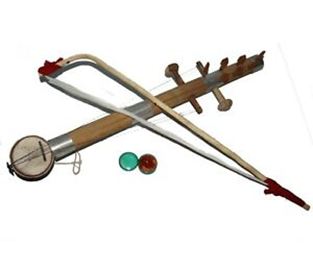
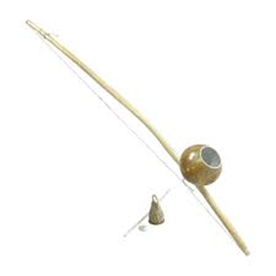
Ravan Hatta, folk instrument of Rajasthan
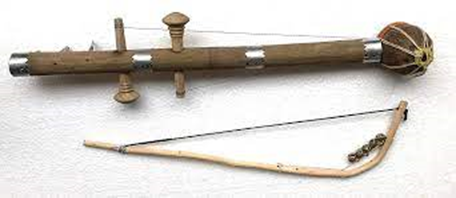
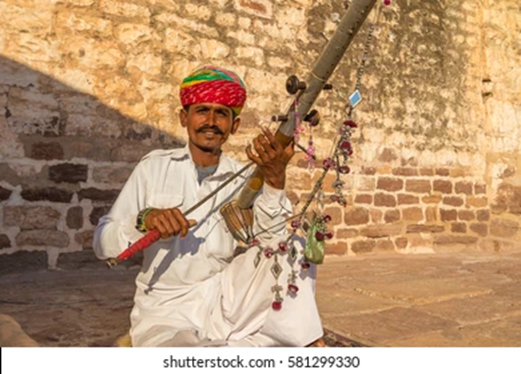
3) Nadi, Tunava – Wind Instruments
Among wind instruments the name ‘Tunava’ or ‘Nadi’ has been utilised frequently for woodwind instruments in the Rigveda and Samaveda.It was similar to the flute and is now called the bansuri or flute. The bansuri-like flute is also depicted in ancient Buddhist, Hindu and Jain temple paintings and reliefs, and is common in the iconography of the Hindu god Krishna. it is intimately linked to the love story of Krishna and Radha.
The traditional design features no mechanical keys, and the musician creates the notes they want by tapping the various finger holes.
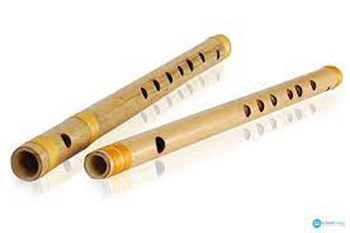
References
Swarganga.org (Musical Instruments in India through the ages - by Chaitanya Kunte)
https://lokogandhar.com/vedic-musical-string-instruments-violin/
